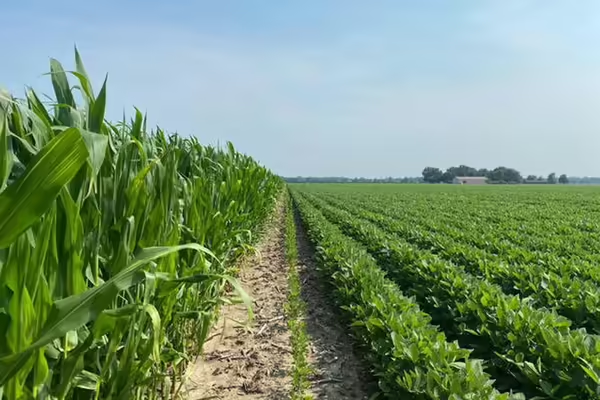
URBANA — While the majority of Midwestern farmers rotate corn and soybeans, commodity prices and corn yield advantages compel some to plant corn year after year. Although foundational research on the benefits of corn-soybean rotation goes back decades, University of Illinois Urbana-Champaign scientists are working to address remaining holistic questions about crop yield, environmental impacts, and economic returns under various crop rotation scenarios.
In a new study, researchers from the university’s Agroecosystem Sustainability Center and the College of Agricultural, Consumer and Environmental Sciences used the sophisticated agroecosystem model ecosys to explain why corn yield is higher after soybean at normal nitrogen fertilization rates; how corn-soy rotation impacts soil greenhouse gas emissions and nitrogen leaching; and when corn-soy rotation is most economically advantageous.
“We found that while corn-soy rotation can boost corn yields and reduce nitrogen fertilizer needs, the benefits come with nuanced environmental and soil carbon trade-offs,” said study leader Kaiyu Guan, founding director of the ASC and ACES Levenick Professor in the Department of Natural Resources and Environmental Sciences at Illinois.
Read the full article from the College of ACES.
University of Illinois Extension develops educational programs, extends knowledge, and builds partnerships to support people, communities, and their environments as part of the state's land-grant institution. Extension serves as the leading public outreach effort for University of Illinois Urbana-Champaign and the College of Agricultural, Consumer and Environmental Sciences in all 102 Illinois counties through a network of 27 multi-county units and over 700 staff statewide. Extension’s mission is responsive to eight strategic priorities — community, economy, environment, food and agriculture, health, partnerships, technology and discovery, and workforce excellence — that are served through six program areas — 4-H youth development, agriculture and agribusiness, community and economic development, family and consumer science, integrated health disparities, and natural resources, environment, and energy.